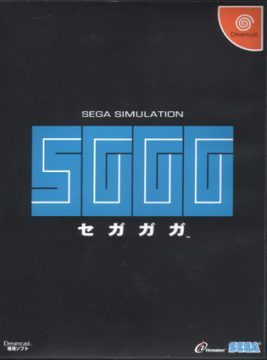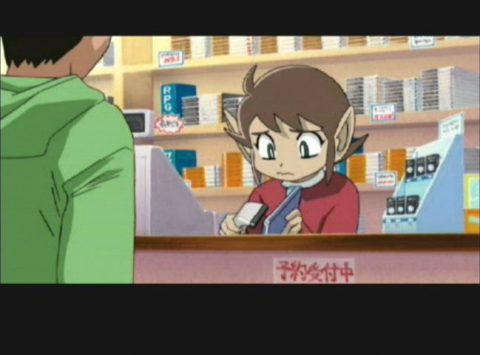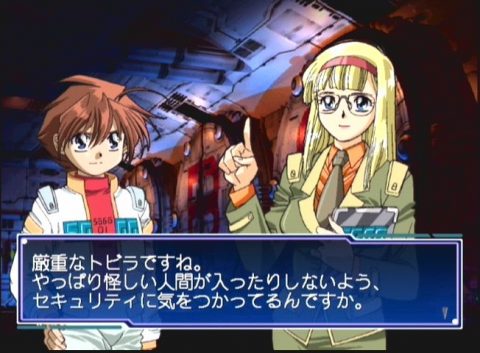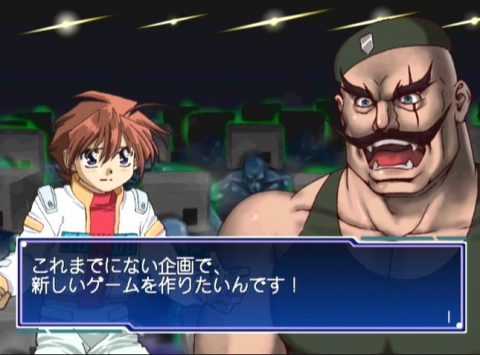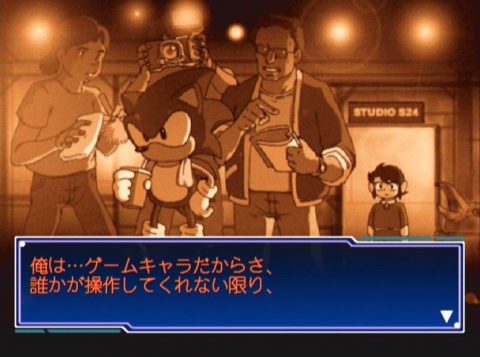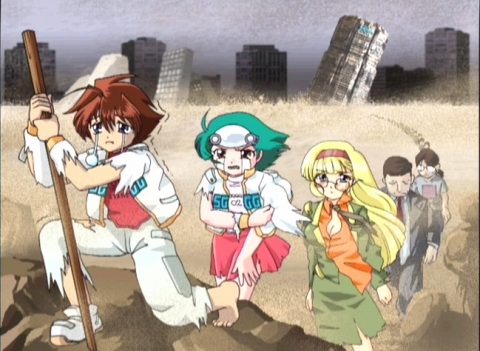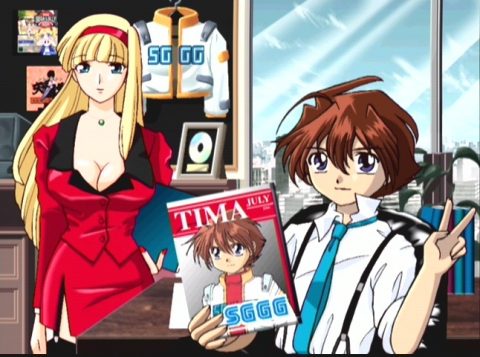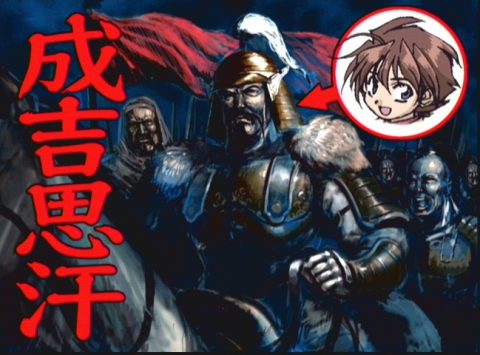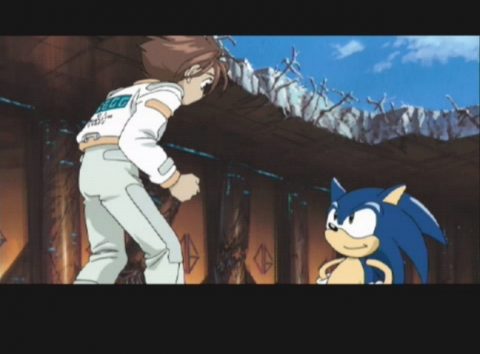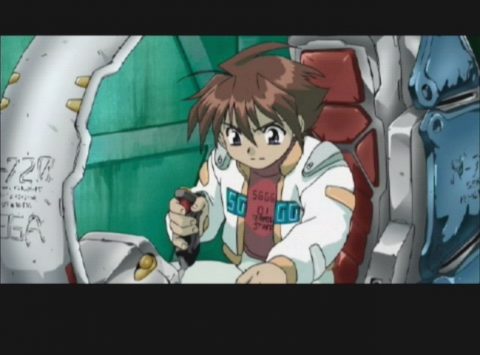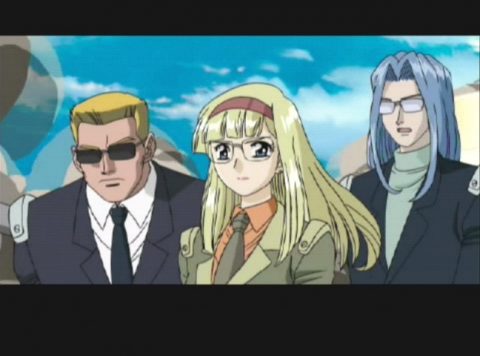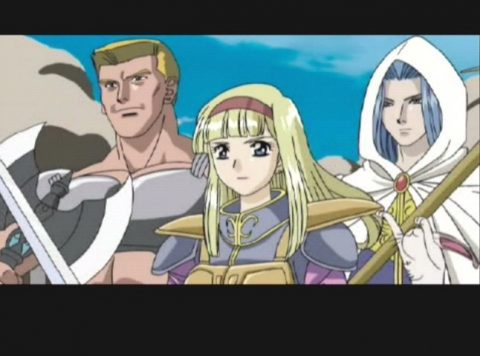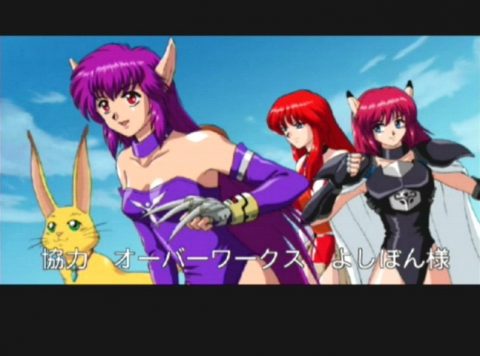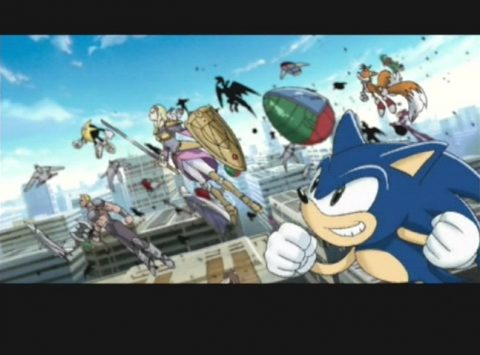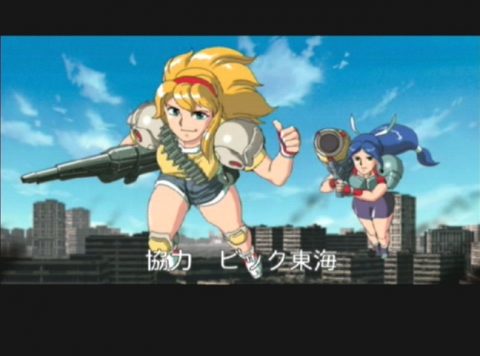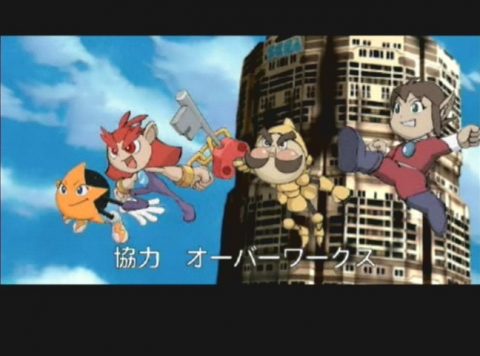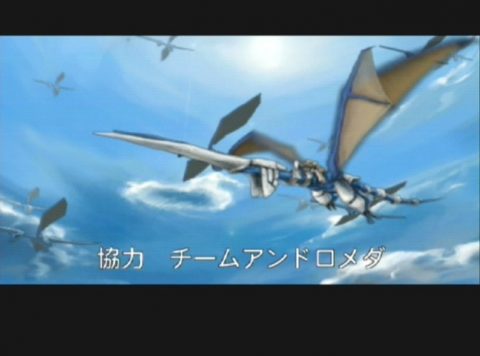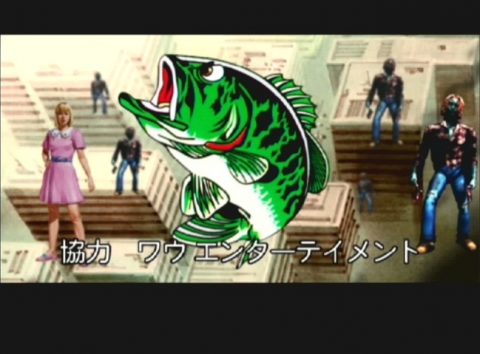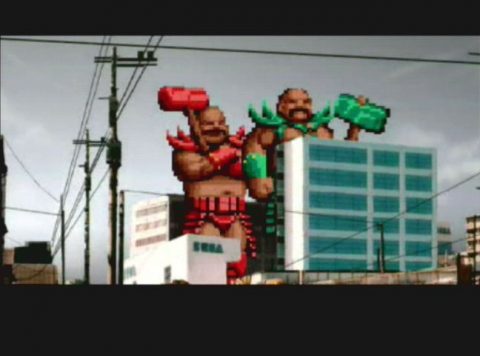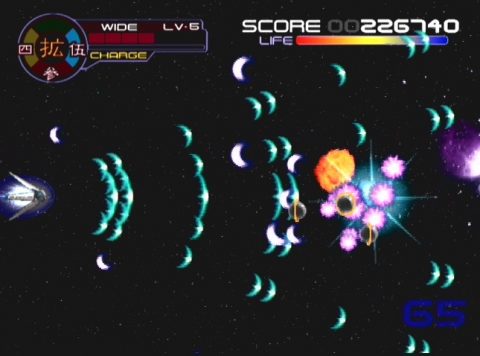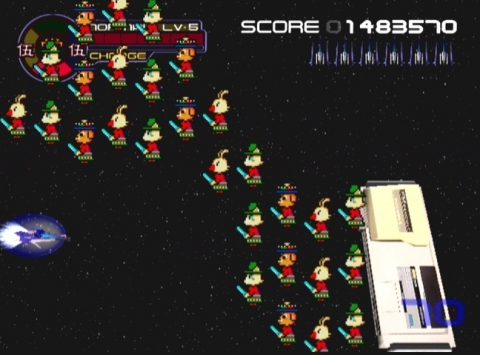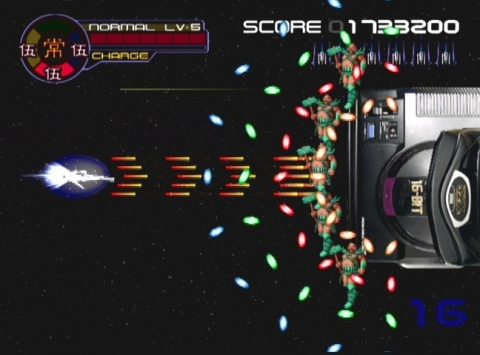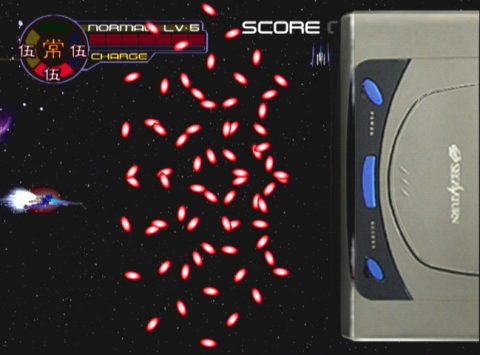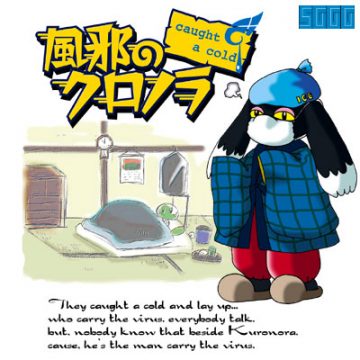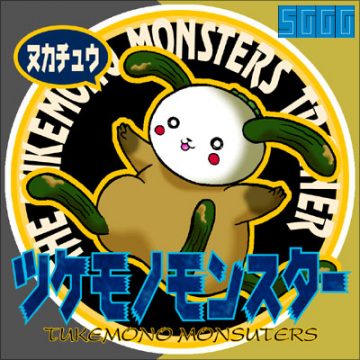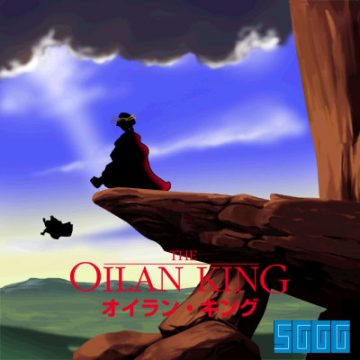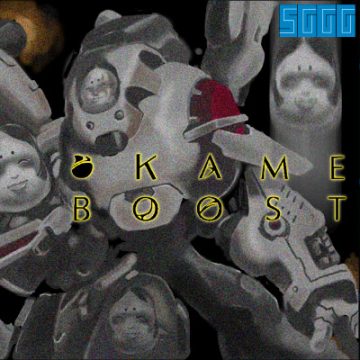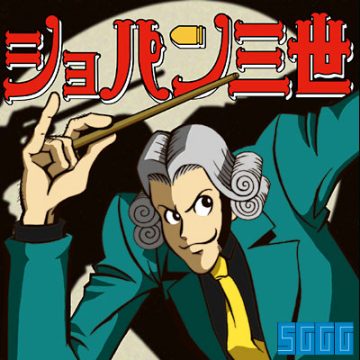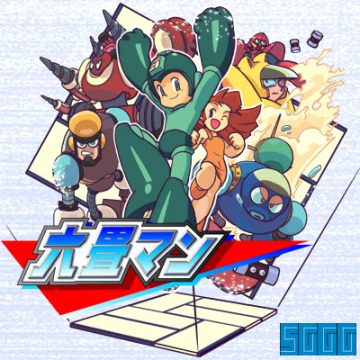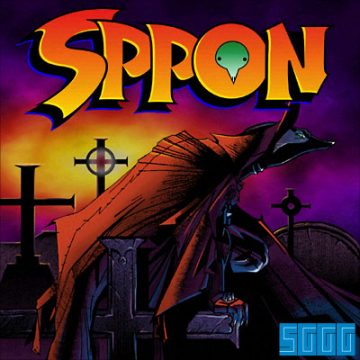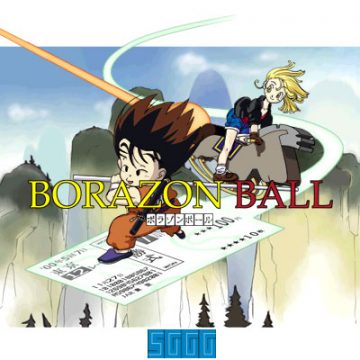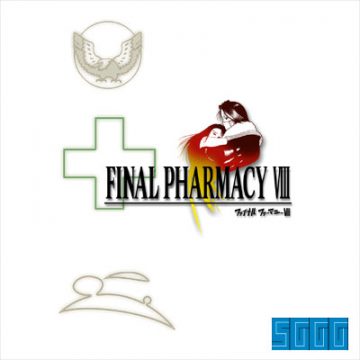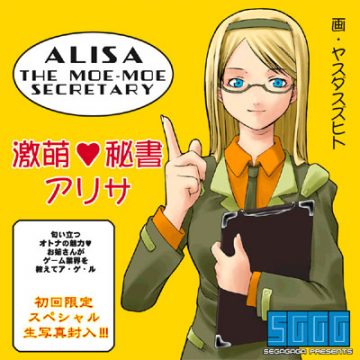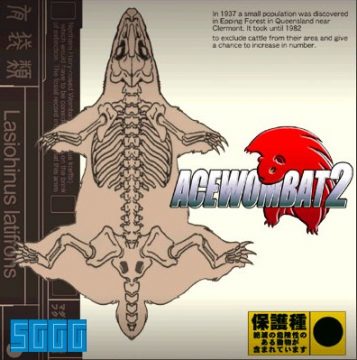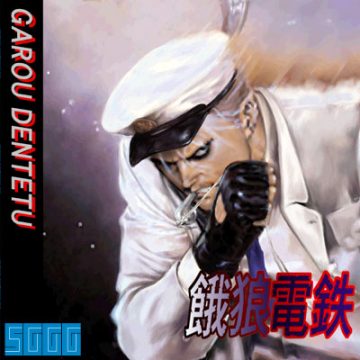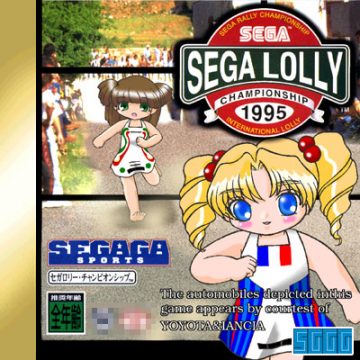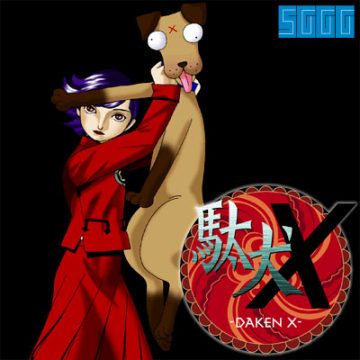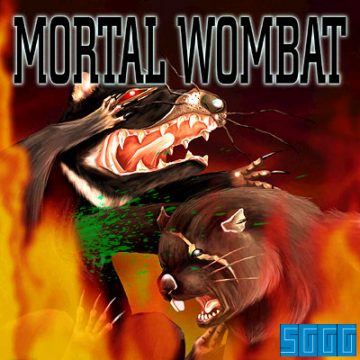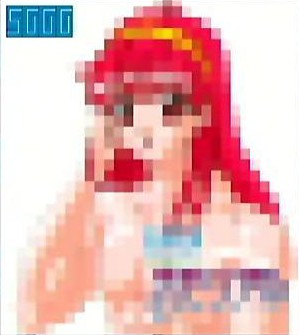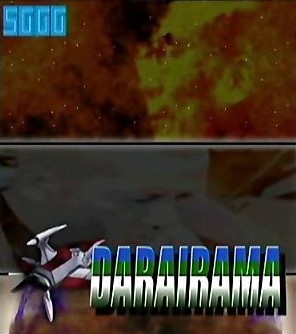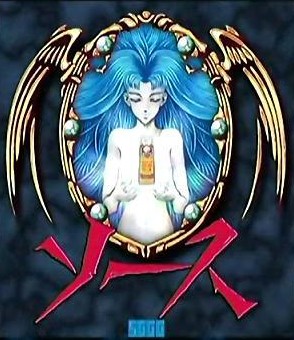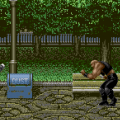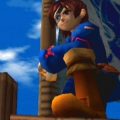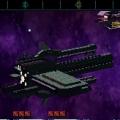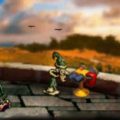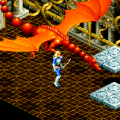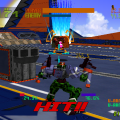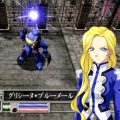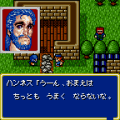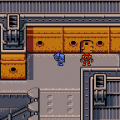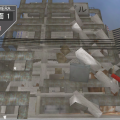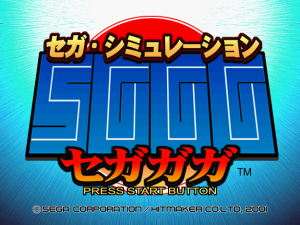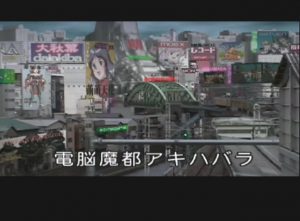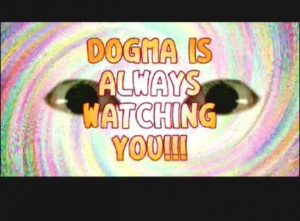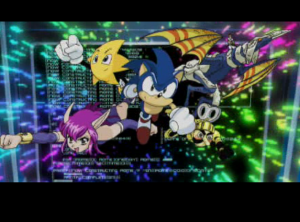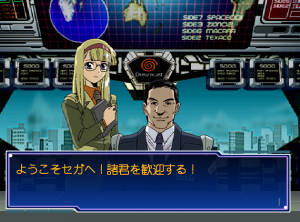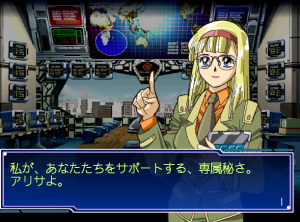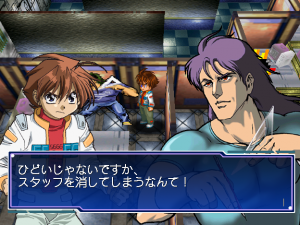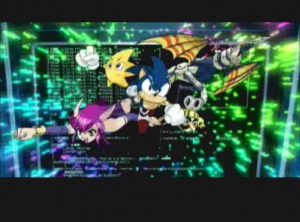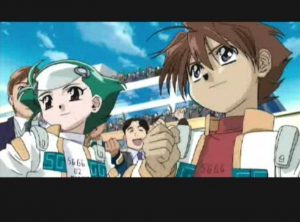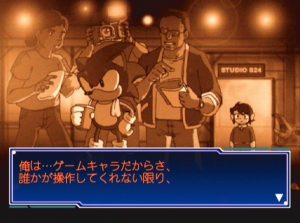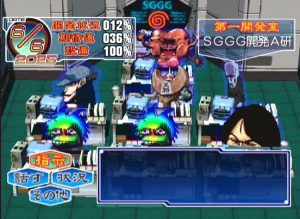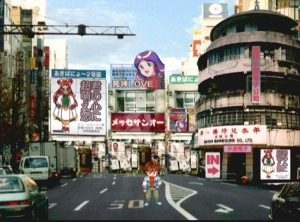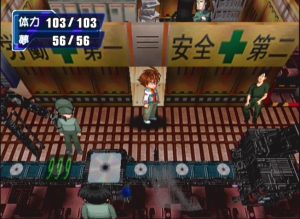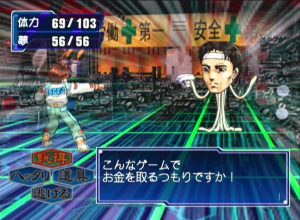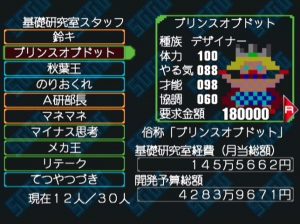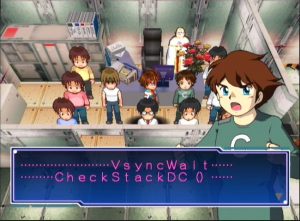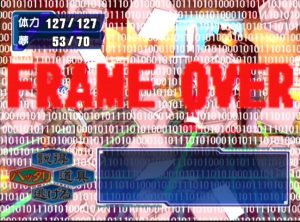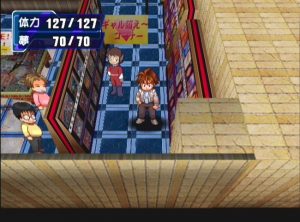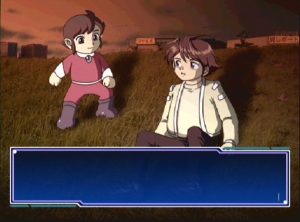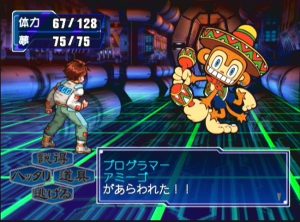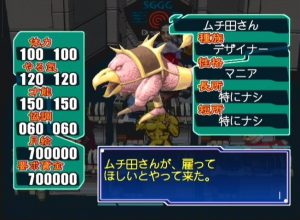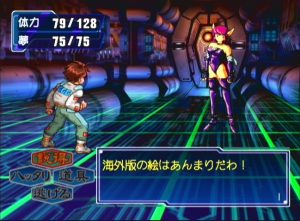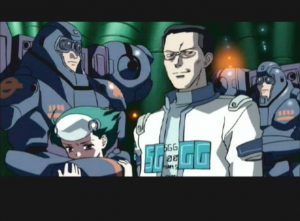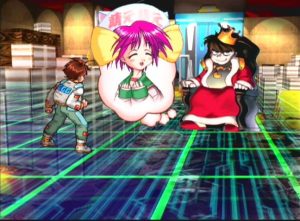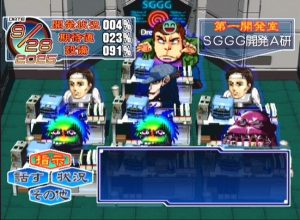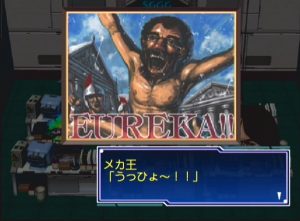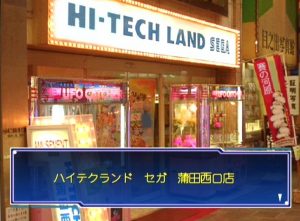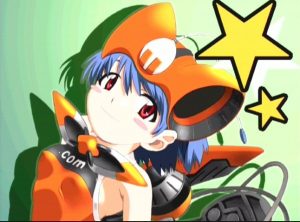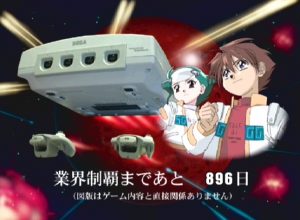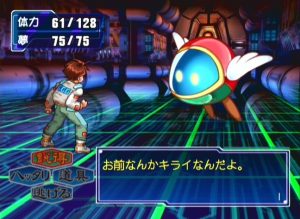It’s tough to be a longtime Sega fan. After the demise of the Dreamcast in 2001, Sega managed to still pump out some decent titles, like Panzer Dragoon Orta and Shinobi. They’d even published some other laudable stuff from other development houses, like Otogi, Condemned: Criminal Origins, and Universe at War. But quality titles like that were a minority in the mid-200s what with Shadow the Hedgehog being the epitome of everything wrong with the poor company, which somehow worsened with Sonic the Hedgehog (2006), routinely regarded as one of the worst games of that year.
But it wasn’t always like this. Back in 2001, over in Japan, Sega released a niche Dreamcast game called Segagaga, a funny little game directed by Tez Okada, who later went on to work with Treasure for Astro Boy: Omega Factor and Gunstar Super Heroes. It is dubbed a “Sega Simulation”, which already sounds distinctly different from your typical video game. The concept behind the game isn’t too far from reality – Sega is in deep trouble, having lost all but 3% of the world marketplace share to the insidious Dogma Corporation. In order to save the company, the president initiates the super secret plan Segagaga, wherein they pull some random kids off the street, put them in charge of the company, and hope they put the company back on the track to success. Naturally, you’re one of those kids, a chap (humorously named) named Tarou Sega.
This epic story is told by an animated intro showing the roughs and rigors of game development. The theme song is the “Segagaga March”, a classy little number with inspirational lyrics about picking up Sega no matter how many times they stumble. Nearly all of the music is based off the same melody.
Once all of this is done, it’s time for work. On your first day, you show up to the Sega Tower, and it’s kind of a mess. From gazing around the shifty-looking neighborhood, you definitely get the impression that things aren’t going so well for the poor company. Upon entering the building, you meet a young green haired girl, another kid selected to participate in Project Segagaga. After a short speech from the president, you meet up with Alisa, who is your guide through the rest of the game. (The fact that she shares the name with the protagonist of Phantasy Star is definitely not a coincidence, which we shall see more about later.) She acquaints you with the basic situation, then gives you a tour of Sega’s operations.
The most important part of Sega is the Tera Drive, a super computer that houses the heart and soul of Sega. It’s equipped with 4096 512-bit CPUs, each running at 333 gHZ, with 512 terabytes of RAM. It can also display 167,700,000 sprites on a single horizontal place. (For comparison’s sake, the old NES could handle eight sprites before it begins flickering.) Alisa then leads you to three massive bulkheads, which lead to the various development studios.
“Those are gigantic doors.” You remark. “Are they for keeping intruders out?”
“Nope.” replies Alisa. “They’re for keeping our staff members in.”
She continues. “Game development is a very special job that requires a very special person. The high stress levels often drive our staff members to become… subhuman. They’re violent and need to be caged. But we need them to make good games. This is the unfortunate truth of the game industry.”
Clearly this is not how we imagined video game development, right? But Alisa elaborates further. “No one has set foot in the development room for nearly twenty years. So no one knows what goes on in there, really. Sometimes they give us a finished game in exchange for some food and water. Sooner or later, you’re going to have to go in there and wrangle those guys under your control.”
And thus the game begins properly. Your first step is to make your way through the various development studios, find staff members, and hire them under your control. These segments are pretty much exactly like any regular console RPG – each studio is a small dungeon-like maze that takes place. All of the backgrounds are polygonal, while the characters are all high-res sprites. Each of the characters are portrayed with some kind of bizarre caricature – some characters look like gigantic masses of pixels, while others are simply floating heads. Staff members who are mecha fans are portrayed as giant robots – alcoholic employees are huge blobs surrounded by beer bottles. Some are cartoony little drawings, others look like hideous beasts. One class of enemy, the “macho” class, are all heads of karate guys pasted onto robots, submarines, octopus legs and other weird bodies. From looking at this artwork, it’s easy to see why the game never made it outside of Japan. While exploring the dungeon, all of the NPCs look paper-thin (like Parappa the Rapper), and just slide around, without any animation at all. It’s pretty clear that fancy graphics weren’t exactly a prerogative.
Although you can run around the office and completely avoid random encounters, it’s definitely to your advantage to sit around and fights as often as you can. Unlike most RPGs, battles consist of shouting matches between your character and your opponent. By hurtling insults and commands (“Get back to work!”, “You’ll never get a girlfriend!”, “Do you think this game can really make money?”, etc.), you can eventually weaken and defeat them. These are all pretty simplistic, as you only have one party member, and only fight one enemy at a time. While there are only a few stat-boosting items, there are a few highly amusing special attacks – one will flood the screen with ones and zeros, causing a buffer overflow and stunning your enemy for a few turns. Another one makes your foe think of a cute girl, which lowers their defenses. It’s very simplistic, but it’s rarely too difficult. The game is polite enough to advise you of your expected level when entering an area, so as long as you level up, you’ll probably be fine. However, if you lose in combat or exit the office, you lose 30 days of development time – which is extremely important in the later stages of the game.
In the RPG segments, the goal is to recruit as many members as possible. After defeating an enemy, there’s a chance that they’ll stick around and negotiate for a job. You have 10 seconds to answer a rapid fire series of questions, most of which includes salary offers. The object is to correctly answer their questions, all while trying to offer them the lowest possible salary. It gets a little bit hard for us gaijin, since you really need to read FAST to comprehend anything, but it’s really easy to beat these segments by mere guesswork.
Anyway, as you trek through the office, you’re faced with a barrage of thoroughly ridiculous situations. One designer, who’s drawn to resemble a bishounen, wants to waste 200,000 polygons to render a garbage can. Another military-type dude gives you a lecture about the gaming business. “Games are nothing more than mere products! You examine popular market trends, churn out nearly-identical titles, and then you rake in the dough! Imitate our competitor’s top sellers, that’s the golden rule! Throw away your emotions and become a mindless machine, that’s how you make games!”
“Please! Let me make games here!” You plead. “I want to make totally innovative games that nobody has ever seen before!”
“Bah! Innovation? How foolish! Who will take responsibility if the game flops?”
“But if we do it your way, we’ll never attract new customers. It’s worth giving a shot. Please!”
“You know nothing about the business, boy! I’ll teach you the harsh reality of the corporate world!”
And then you fight. Later in the game, this guy will join you as a Director. As noted by his personality, he’ll churn out mediocre games at a fast pace – whether you want Sega to be that kind of company is up to you. Certainly you don’t want to run a sweatshop like the infamous early 20th century Electronic Arts, right?
Once you conquer the first development studio, you’re allowed to actually make games, and thus begins the sim portion of Segagaga. Each development studio is filled with seven staff members – three programmers, three designers, and one director. Each employees is rated on one of four skill sets – Stamina, Creativity, Skill and Speed. At the top of the screen, you’re given statistics as to how well the game production is progressing – how close the game is to completion, its level of quality (ranging from 0% to 300% and beyond), and how much money you have left. So you’re left with some important decisions – do you want to shove lots of mediocre games out the door quickly, or focus your time and effort on making a really standout title? Should you overwork your staff and cause them to lose stamina (possibly forcing them to take a vacation), or let them work at their own pace?
For the most part, once you’ve assigned your staff, this process is fairly automated. You pretty much just kick back, speed up time, and watch as the numbers pile up. Sometimes different random events will pop up, like an employee getting married (which makes them happy), getting divorced (which makes them depressed), making friends or enemies with other programmers, discovering efficient design tricks or coming across some nasty bugs. You can give specific orders to each person, telling them to work harder, or to take a break to study, or take a rest. You can give various items to alter various stats as well, most of which just refresh their stamina. (One of the skills, which shows up as a Question Mark, summons an underage girl wearing a gym uniform, who refreshes each staff member with incredible boosts.) Some times you’re asked specific questions by the staff members on how to influence development, but the most important decisions come up when you meet with directors. When the game hits Alpha or Beta stage, you can see how the game is shaping up, and either delay or rush development.
While the streamlining makes management fairly easy, it does feel a little bit disappointing that you don’t have a more hands-on grip with development. You never get to choose what kind of game you make – when you finish, it just ends up being some kind of classic Sega title. Maybe it would’ve been nice to, say, make a new Shining Force title. (Although there are many amusing parody games.) Maybe it would’ve been nice to hire graphic artists or musicians or story writers, or balance the difficulty or game length. Maybe it would’ve been nice to analyze market trends and create games based on those trends. Unfortunately, you don’t get to do any of this, and it definitely feels like a missed opportunity, especially considering the target audience for Segagaga – that is, hardcore Sega nerds.
There are a total of three development studios to conquer, plus a hidden basement that you explore in first-person view a la Phantasy Star. You can also visit ripoffs of otaku paradises like Akihabara and Comiket. In addition to creating games, you can also choose to unveil a whole new console, which can drastically boost your market share if the timing is right. There are several different endings, depending on how successful you are during the three year time span. The only way to really lose the game early is by running out of money.
It’s a little bit strange how the game balances out the story with the sim portions. You’re heavily neutered as far as game development until you open up the second and third studios, but you still need to pump out some titles so Dogma doesn’t totally take over the gaming market. As a result, you’ll spend the first half of the game working through the RPG segments, sporadically making games, while you’ll spend the second half focusing almost entirely on the sim part.
Neither the role-playing elements nor the sim elements would stand particularly well on their own, and while they’re woven together awkwardly, it still makes for an intriguing, not to mention incredibly original game. But most of the joy comes from the incredible amounts of Sega fan service found throughout the game. One room has the Big Wing from Fantasy Zone (costs 100 G, it reminds you.) The shop uses the same song as Fantasy Zone. When the American executive takes over the studio, he hires goons wearing suits straight out of ESWAT. One of the pieces of armor is Ryo Hazuki‘s leather jacket. There’s a mini-game which involves kicking Dreamcast boxes in a truck that’s heavily reminiscent of the old arcade game Pengo – they even play a variation if its theme music. You even meet the old white rabbit, Profesor Asobin, who was Sega’s spokeperson back in the Mark III/Master System days.
At one point, you’re demoted to a retail clerk, working along side old Sega mascot Alex Kidd. While sitting next to a river and watching the sun set, he details the tragic story of his fall from grace – at first, he was strong competition for Nintendo and Mario (both names bleeped out), but was later forgotten in favor of Sonic the Hedgehog. You can also recruit several classic Sega characters, like Nei from Phantasy Star II (who complains about the American artwork for the series), Amigo the monkey for Samba de Amigo, one of those bird monsters, the Chicken Leg, from Golden Axe, various creatures from Baku Baku, and others. It’s silly and glorious and amazing and depressing all at the same time. Depressing, because this is the Sega that seems to be dying.
The ending of the game is perhaps the most brilliant of all time. Facing off against the evil Dogma corporation, young Tarou Sega activates the R720, a variation of the rotating R360 cabinet developed for use with G-LOC. Except it just doesn’t sit there and rotate – for the low, low price of 500 yen, it actually takes him into outer space, at which point the game turns into a 2D sidescroller. This minigame is heavily influenced by Technos’ Thunder Force, with similar weapons, and even the exact same sound effects and music. In addition to the R720, you can play as an alternate ship which looks like the Thunder Force V vessel. Tez Okada, the director, was obviously a big Thunder Force fan – years later, he would go on to direct Thunder Force VI for the PlayStation 2, which had previously been in development for the Dreamcast, but eventually cancelled. This section of Segagaga actually uses some of the assets from the cancelled game.
After flying through an asteroid field, you face off against variations of Sega’s hardware, each introduced with technical specs and their data of release, again similar to Thunder Force V. The SG-3000 tosses single color sprites at you. The Mark III (Master System) attacks with enemies from Fantasy Zone and characters from Nazca ’88 (Aztec Adventure). The Mega Drive, complete with Mega CD and Super 32X, fights with foes from Golden Axe and Space Harrier II. The final battle is against the Saturn, which litters the screen with bullets. Everything about this is beyond the comprehension of amazing.
Meanwhile, on the surface of earth, the forces of Sega are taking on evil forces in an epic battle of their own. Your assistant Alisa, along with her associates toss off their business suits to reveal themselves as Alisa, Lutz and Tyrone (Alis, Noah and Odin) from the original Phantasy Star, with Mieu jumping on their shoulders. Then characters from various Sega teams join the fray – Team Overworks, by Yoshibon-sama (or Toru Yoshida, the character designer for the Phantasy Star games including Nei, Mieu, and Rika, from PS II, III and IV, respectively. Then are joined by other Team Overworks characters, including Ristar, Astal, Pepperouchau (from Clockwork Knight) and Alex Kidd. Team Andromeda is represented by the dragons from Panzer Dragoon; WOW Entertainment is represented by the zombies from House of the Dead and the fish from Get Bass. Curiously, the girls from Trouble Shooter / Battlemania show up playing up Vic Tokai. Two of the gigantic boss characters from Golden Axe rise from a building, Evangelion-style. None of this is playable, but all is shown through an animated cutscene.
Naturally, with this being entirely Japanese, there are plenty of things us Westerners just won’t understand at all. There are plenty of references to video game and otaku culture, most of which just doesn’t seem to make sense. For example, every time a character mentions an RPG, it’s followed by a disclaimer that says “RPGs are a trademark of Bandai.” Why Bandai? Apparently it’s a reference to a time when Bandai, quite ludicrously, tried to trademark the anacronym. I’m sure jokes like these make sense if you’re intimately familiar with the gaming scene over in Japan, but even the most rabid fans will undoubtedly be scratching their heads, even if they can understand the text. While these aspects are a large part of Segagaga, the rest of the game is strong enough so the language barrier won’t provide too large of a problem. The RPG segments are easy with the help of a walkthrough, and the sim parts just require a bit of memorization.
Segagaga is obviously targeted at a very limited audience, even in Japan. It was initially released only through Sega’s online store, D-Direct. In addition to the standard jewel case, it was also released in a DVD case, as well as issued in a special edition boxset that included a t-shirt and some pins. Since the game met with some success, it was eventually released into retail. Anyone willing to brave the Japanese language will find one of the most original, self-referential titles ever made, a stroke of genius that’s a virtual dream come true for Sega fans.
More Shooter Segment / Ending / Other Screenshots
In the first printing of Segagaga, there are many parody images that you can unlock by hacking a save game.. These include artwork very similar to the games they’re referencing, usually with some kind of terrible pun. Some are obvious to English speakers (“Ace Wombat 2”, “Mortal Wombat”, “Final Pharmacy VIII”), while others require some Japanese to understand.
“Kaze no Klonoa” means “Klonoa of the Wind” (simply called “Klonoa” outside of Japan), but “kaze” also means “cold”, as in the sickness. The Lupin the 3rd game actually says “Chopin the 3rd”, hence the composer motif. The Megaman one says “Rokujoman”, a play on Rockman – “rokujo” is an arrangement of tatami mats. The Valkyrie Profile one reads “Valkyrie Frohaile”. “Profile” in Japanese is pronounced “purofairu” – “Frohaile” is a mangling of the term “furo hairu”, which means “to take a bath”, which is why Lenneth is in a steam bath with a towel. The Fatal Fury one reads “Garou Dentetsu” – the Japanese name is “Garou Densetsu”, while a “dentetsu” is a train – the picture shows Terry (or a Terry-a-like) wearing a train conductor uniform. The “Lolly” ones, for “Sega Lolly” and “Lolly X” are a variation on “loli”, the term for little girls, often in a sexual context, here used jokingly. The Metal Gear Solid one reads “Otalu Gear Solid” – “Otalu” should be “Otaru”, a Japanese resort town.
“Daken X” is a play of Maken X, where “daken” is a slang term for a dog (more appropriately, mongrel.) The Tokimeki Memorial picture is blurred out because Konami was notorious for protecting its copyrights and preventing doujinshi authors from featuring their characters in their porn comics. The To Heart one reads “toohato”, which means “ten pigeons”, hence why Akari is surrounded by birds. The Ys one reads “Sauce”, and surely enough, there’s a bottle of sauce in between the goddess’ hands. The one with the salad reads “E no Shokuji”, a parody of “D no Shokutaku” (“D’s Diner”), known outside of Japan simply as D. The title and the blurred out face are Kenji Eno, a rather notorious game developer.

